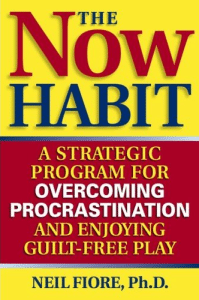Motivation
How To Turn Procrastination Into Productivity

Procrastination is the biggest killer for productivity yet so many of us struggle with it.
For example, you may have a huge deadline due but instead of doing your work, you’re browsing the internet for hours. Or you know you should hang that picture frame that has been staring at you for the last week but instead you decide to watch a TV show you love. Or you know you need to go workout but instead you tell yourself that it’s too cold and tomorrow you’ll run a little longer instead.
When we procrastinate, we squander away our free time and put off important tasks we should be doing. And when it is too late to do them, we panic and wish we got started earlier.
In order to stop procrastinating, we need to understand why we do it in the first place.
Here are four reasons I’ve identified that fuel my lack of action:
- Procrastinate for perfect: Telling yourself you need more time, resources, energy, a better plan, whatever to get it done.
- I will do it better later: You work best under pressure, right? Not really, but it may be the only way you’re used to getting things done.
- Productive off putting: Taking care of all those other things you’ve put off in favor of what you need to get done.
- Maybe, maybe not: Continually question a decision and can’t move forward.
“A year from now you may wish you had started today.” – Karen Lamb
So, how do we overcome procrastinating? Try one of these 9 suggestions:
- Remind yourself that there’s always more to be done than can be done. Then ask yourself if you’re getting the right things done.
- Make a smart to-do list by including only the items that you’re avoiding, not the ones you know you’ll do anyway. Then set deadlines.
- Break the task down to lessen the sense of being overwhelmed. Once you start to enjoy a small accomplishment or two, you’re more likely to finish
- Eliminate temptation to do something else (log off Facebook and put your phone in the other room)
- Bargain with yourself. If you finish making those sales calls now, you can read that new book by the pool later.
- Focus on the success you will achieve and the joy you will feel.
- Come up with a consequence that will stop you from procrastinating. If you don’t finish writing that business proposal, you have to go without eating out for a month.
- Ask someone to help you complete the task. Why are we so afraid to ask for help?
- Make your intentions known. This will add pressure, and for some of us, avoiding the embarrassment of not achieving a set goal is the greatest motivator.
Books I would recommend to read if you’re serious about kicking your procrastination habit:
Eat That Frog! by Brian Tracy
 The legendary Eat That Frog! (more than 450,000 copies sold and translated into 23 languages) provides the 21 most effective methods for conquering procrastination and accomplishing more. This new edition is revised and updated throughout, and includes brand new information on how to keep technology from dominating our time.
The legendary Eat That Frog! (more than 450,000 copies sold and translated into 23 languages) provides the 21 most effective methods for conquering procrastination and accomplishing more. This new edition is revised and updated throughout, and includes brand new information on how to keep technology from dominating our time.
The Now Habit by Neil A. Fiore
 The Now Habit offers a comprehensive plan to help readers lower their stress and increase their time to enjoy guilt-free play. Dr. Fiore’s techniques will help any busy person start tasks sooner and accomplish them more quickly, without the anxiety brought on by the negative habits of procrastination and perfectionism.
The Now Habit offers a comprehensive plan to help readers lower their stress and increase their time to enjoy guilt-free play. Dr. Fiore’s techniques will help any busy person start tasks sooner and accomplish them more quickly, without the anxiety brought on by the negative habits of procrastination and perfectionism.
Procrastination by Jane B. Burka
 Based on years of counseling, psychologists Jane B. Burka and Lenora M. Yuen offer a probing, sensitive, and sometimes humorous look at the problem that troubles everyone. Revealing the reasons we put off tasks-fears of failure, success, control, separation, and attachment-the authors outline a practical, tested program to overcome procrastination. Candid and understanding, Procrastination is a must-have today for anyone who puts everything off until tomorrow.
Based on years of counseling, psychologists Jane B. Burka and Lenora M. Yuen offer a probing, sensitive, and sometimes humorous look at the problem that troubles everyone. Revealing the reasons we put off tasks-fears of failure, success, control, separation, and attachment-the authors outline a practical, tested program to overcome procrastination. Candid and understanding, Procrastination is a must-have today for anyone who puts everything off until tomorrow.
Did You Know
7 Surprising Life Lessons Video Games Taught Me That School Never Did
Want to get better at something? Study the pros. That applies to both life and video games

If you play video games, you’ll quickly discover you’re not alone. You’ll meet people who share your interests, challenge your skills, and even teach you something new about yourself. I started gaming when I was 10. A classmate invited me to play after school, and I was hooked. (more…)
Featured
The Psychology of Motivation: How to Keep Moving Forward Every Day
Discover how daily habits, self-discipline, and a few clever strategies can spark your drive and focus.

You wake up on a typical Monday morning, glance at your clock, and realize it’s time to get moving. How do you summon that inner drive to deal with your responsibilities with a genuine smile on your face? (more…)
Motivation
From Couch Potato to Go-Getter: A Step-by-Step Motivation Plan for Everyone
By understanding what motivates you, you can turn your dreams into reality

Are you tired of feeling like a couch potato? Do you want to transform your life and become a go-getter? You’re not alone! Many people struggle with motivation, but the good news is that change is possible. (more…)
Motivation
Why You’re Failing to Achieve Your Goals and How to Fix It Now
Understanding motivation is crucial because it’s the cornerstone of success

Feeling stuck? Lost in a sea of goals, but lacking the drive to pursue them? It’s time to shift gears and reignite your motivation! Picture this: From stalled to soaring, your journey awaits. (more…)
-

 Success Advice3 weeks ago
Success Advice3 weeks agoThe One Mindset Shift That Made Me Irreplaceable At Work
-

 Scale Your Business4 weeks ago
Scale Your Business4 weeks agoWhy Smart Entrepreneurs Never Skip This One Business Expense
-

 Success Advice3 weeks ago
Success Advice3 weeks agoHow Playing by the Rules Became the Smartest Business Strategy
-

 Did You Know2 weeks ago
Did You Know2 weeks ago7 Surprising Life Lessons Video Games Taught Me That School Never Did
-

 Success Advice2 weeks ago
Success Advice2 weeks agoHow to Build Trust, Kill Micromanagement, and Lead a Team That Thrives
-

 Scale Your Business2 weeks ago
Scale Your Business2 weeks agoHow to Build a Workplace People Actually Want to Show Up To
-

 Success Advice2 weeks ago
Success Advice2 weeks agoSuccess Isn’t Sexy: 5 Daily Habits That Actually Work
-

 Scale Your Business2 weeks ago
Scale Your Business2 weeks agoHow Smart Entrepreneurs Cut Financial Chaos in Half with One Simple Switch






























7 Comments